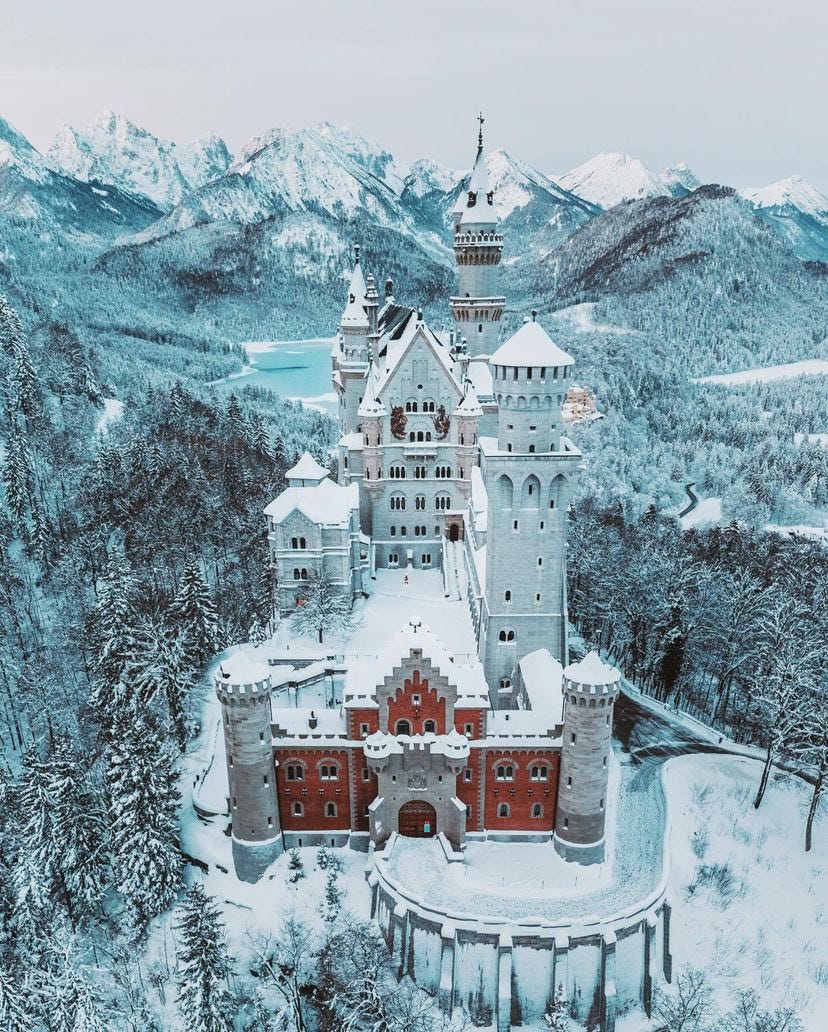This Castle Inspired Disney—But Its Real Story Is Way Darker
(Neuschwanstein Castle – Bavaria, Germany)
Neuschwanstein Castle is located in southern Germany, perched above the village of Hohenschwangau. With its tall towers and white stone, it looks like something out of a storybook. Walt Disney himself drew inspiration from its dreamlike silhouette, weaving key elements into the iconic Sleeping Beauty castle at Disneyland. Yet behind the postcard-perfect facade lies a tale of obsession, tragedy, and unfinished dreams that casts a long, shadowy pattern across this architectural wonder.
Ludwig’s Romantic Vision
Born in 1845, Ludwig II ascended the Bavarian throne at just 18. A shy, introverted dreamer, he preferred Wagnerian operas and medieval legends to politics and statecraft. When European monarchies called him to duty, he retreated into fantasies of chivalry and romance.In 1868, he inherited Hohenschwangau Castle, his boyhood home, and fell in love with the surrounding Alpsee valley. Within its walls, he first toyed with the idea of building a personal refuge, rooted in the stories he adored.
In 1869, inspired by Richard Wagner’s epic operas, Ludwig commissioned his first “Mad King” project which was a stage set in stone. Architect Eduard Riedel proposed a neo-Gothic-style building with towering battlements, narrow windows, and steep roofs that echoed medieval fortresses. Construction began that year, and Ludwig drafted the earliest drawings himself, combining styles from Greco-Roman halls, Romanesque chapels, and Bavarian timber houses.
From Concept to Construction
The workmen labored through harsh Alpine winters, hauling limestone from nearby quarries and wood from local forests. By 1873, the kitchen wing and the grand Throne Hall were starting to take shape. But every detail changed at the king’s whim. When the initial design felt too rigid for his romantic vision, Ludwig scrapped walls and redrew facades. Each change delayed progress and drove up costs. By 1884, less than five percent of the castle was complete, despite spending over six million gulden.
Georg von Dollmann took over as architect in 1874, followed by Julius Hofmann in 1886. Hofmann brought the interior to life with lush murals depicting Tristan and Isolde’s tragic love, the Swan Knight, and even Norse gods. Hidden corridors, private chapels, and sweeping balconies revealed Ludwig’s wish for both spectacle and solitude. He imagined Neuschwanstein as a living stage for Wagner’s myths, a place where art and architecture blended into one.
Keep reading with a 7-day free trial
Subscribe to Architecture and Tradition to keep reading this post and get 7 days of free access to the full post archives.



